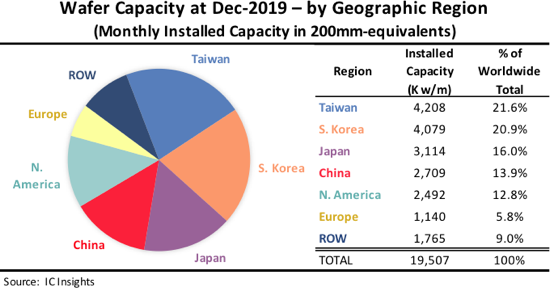Kioxia Holdings Corporation, the world leader in memory solutions, today announced the appointment of Michael R. Splinter as an independent director, effective immediately. Mr. Splinter is a 40-year veteran of the semiconductor industry and brings various business and technology experience that will help drive sustainable growth at Kioxia.
STMicroelectronics Extends Digital-Power Choices in 600W-6kW Range
STMicroelectronics is extending its range of digital power-supply controllers with the STNRGPF02 for two-channel interleaved boost-PFC topologies. Customers can easily configure the device using eDesignSuite software that also helps quickly complete the circuit design and select external components.
Soft Robotics, Sensor Design, Foldable Microdisplay – SEMI FlexTech Launches Three New Projects to Advance Flexible Hybrid Electronics
SEMI FlexTech today announced the launch of three projects to accelerate sensor and sensor system innovations for new applications in industries including healthcare, automotive, industrial and defense.
World’s Widest Graphene Nanoribbon Promises the Next Generation of Miniaturized Electronics
With literally the thickness of one carbon atom and electrical properties that can surpass those of standard semiconductor technologies, graphene nanoribbons promise a new generation of miniaturized electronic devices. The theory, however, remains far ahead of reality, with current graphene nanoribbons falling short of their potential.
Optimized for AI Accelerator Applications, GLOBALFOUNDRIES 12LP+ FinFET Solution Ready for Production
GF’s differentiated 12LP+ solution is optimized for artificial intelligence (AI) training and inference applications. Built on a proven platform with a robust production ecosystem, 12LP+ offers chip designers an efficient development experience and a fast time-to-market.
Development of a Small Sensor Capable of Continuously Monitoring the Phytohormone Ethylene
NIMS and AIST have developed a small sensor capable of continuously monitoring the plant hormone ethylene. Ethylene gas promotes ripening in fruits and vegetables, but excessive exposure promotes them to rot. The new small sensor can be used to monitor fruits and vegetables by continuously detecting ethylene gas, ensuring the freshness during transportation and storage, and helping reduce food waste.
Park Systems Announces Online Special Edition “NanoScientific Symposium on Nano Applications for Today’s Changing World”
Park Systems presents “NanoScientific Symposium on Nano Applications for a Changing World” sponsored by Physics World and Nanotechnology World Association. Park Systems launched this online event for researchers and scientists in nanoscience and nanotechnology to share data on how new nano applications under research will lead to discoveries that have a tremendous positive impact on the world.
Taiwan Edges South Korea as Largest Base for IC Wafer Capacity
China capacity expansion forecast to push the country into second place in the regional rankings in 2022, trailing only Taiwan in size.
Pfeiffer Vacuum Introduces OmniStar and ThermoStar Next Generation Gas Analyzers
OmniStar and ThermoStar GSD 350 are compact, portable benchtop analyzers for analyzing gases at atmospheric pressure.
STMicroelectronics Extends USB Fast Charging over USB-C to Embedded Applications with USB-IF-Certified Development Board
STMicroelectronics (NYSE: STM), a global semiconductor leader serving customers across the spectrum of electronics applications, is facilitating modernization of battery-powered products to capture the advantages of the latest USB Power Delivery (USB PD) technology including faster charging and easy reuse of USB-C chargers and cables.
